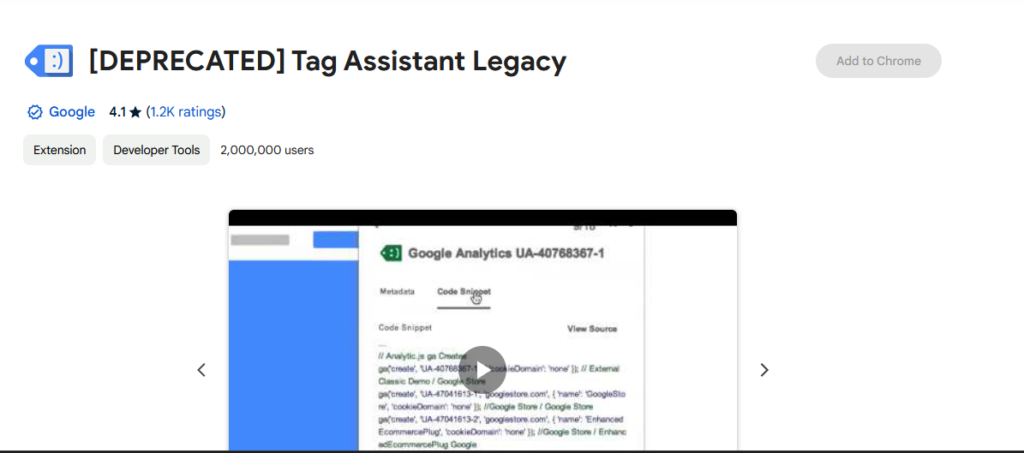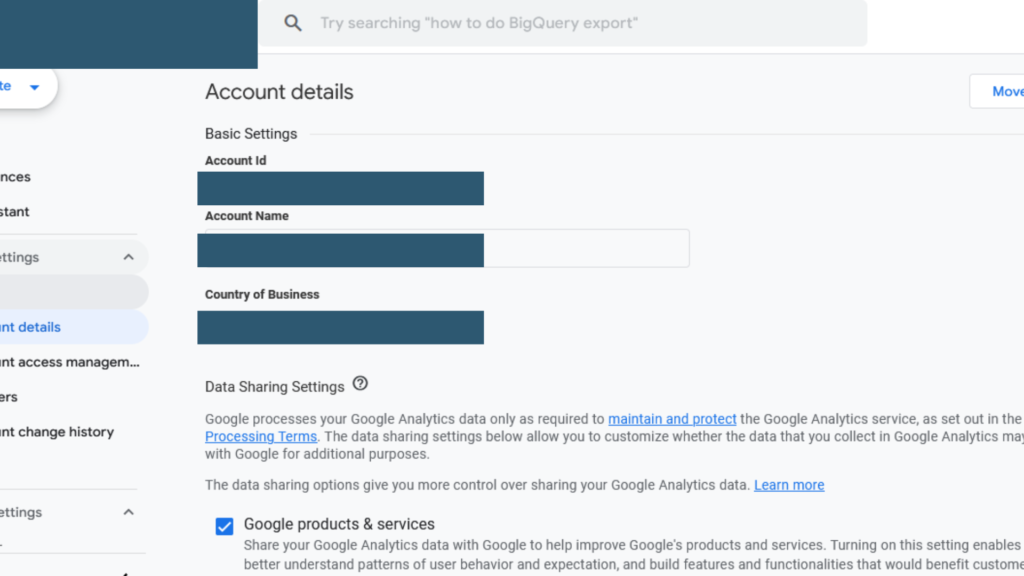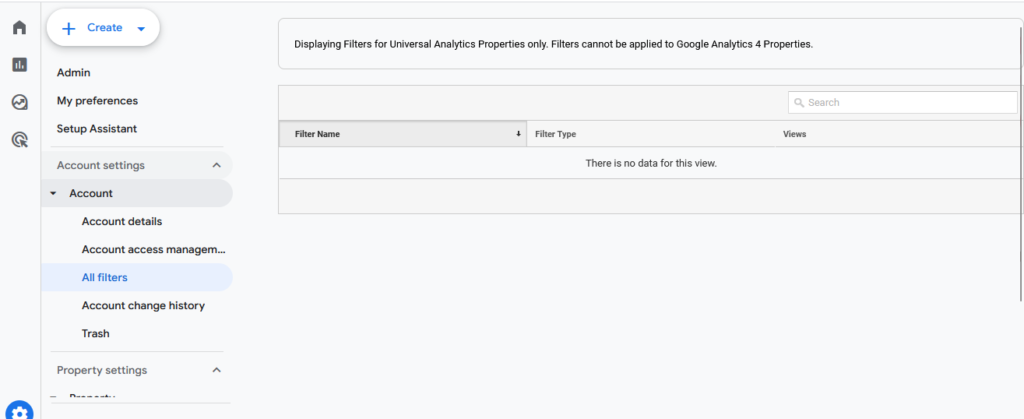
Table of Contents
Introduction
I found someone asking for a solution to the “No data received from your website yet” issue reported by Google Analytics. Here’s their situation:
I’m trying to connect my website to a new GA4 account using a completely new analytics account, but 72 hours later, it’s still not collecting data. The old account still exists elsewhere but there’s no code connection anymore—could that be causing a problem?
I’m using Header Footer Code Manager to manually insert the code into the header, and it appears correctly in the page source.
The site is XXX and it’s built on WordPress with a bespoke theme. All plugins are up to date.
Any advice would be greatly appreciated. Thanks in advance.
Let’s find a solution for this error together!!!!
Troubleshooting GA4 Data Collection Issues
Solution 1: Verify Proper Configuration
Upon reviewing a site, I came across the following code snippet, which I have slightly anonymized by removing part of the GA ID:
<!-- HFCM by 99 Robots - Snippet #1: GA4 Code -->
<!-- Google tag (gtag.js) -->
<script async src="https://www.googletagmanager.com/gtag/js?id=G-DMWJ****3E7"></script>
<script>
window.dataLayer = window.dataLayer || [];
function gtag(){dataLayer.push(arguments);}
gtag('js', new Date());
gtag('config', 'G-DMW****3E7');
</script>
<!-- /end HFCM by 99 Robots -->In my assessment, this tag is functioning as expected. I have confirmed this by utilizing the tagassistant.google.com service to check the site.
While it is possible that you may just need to wait, have you made sure that you are viewing the correct property within Analytics? I believe my visit to your site did result in a hit.
As a WordPress user, you may also want to consider using the Site Kit plugin by Google.
It allows you to conveniently check your Analytics metrics directly from your WordPress dashboard, simplifying the management and monitoring of your data.
Solution 2: Additional Troubleshooting Tips
If your GA4 account is still not collecting data after 72 hours, here are a few things you might want to check:
- Proper Configuration: I suggest ensuring that your GA4 account is properly configured. This involves setting up your property, adding your tracking code to your website, and enabling data collection.
- Google Analytics Settings: It is important to make sure that data collection for GA4 is enabled in your Google Analytics settings.
- Website Traffic: You should also verify that your website is receiving sufficient traffic. GA4 requires a certain amount of traffic to begin collecting data.
Please note that it may take up to 72 hours for GA4 to start collecting data.
If you’ve already checked everything and still don’t see any data, I suggest waiting another 72 hours and checking again.
If you’re still not seeing any data after this period, here are some troubleshooting tips you can consider:
- Verify Your Tracking Code: Make sure that your tracking code is installed correctly on your website. You can use the Google Analytics debugger to assist you with this.
- Review Website Logs: Check your website logs for any errors that might be preventing GA4 from collecting data. These logs can be helpful in troubleshooting the issue.
- Contact Your Web Hosting Provider: If you’re using a web hosting provider, they might be able to assist you in troubleshooting any GA4 data collection issues.
Solution 3: Clearing your browser cache can help resolve issues with Google Analytics data not being displayed
If you’re experiencing issues with Google Analytics data not showing up, clearing your browser cache can be a helpful solution.
By clearing your cache, you can remove any stored data that might be causing interference with the accurate reporting of data in Google Analytics.
The browser cache is a temporary storage location on your computer or device where the browser stores website data like HTML files, images, and scripts.
When you visit a website, the browser checks if it already has the requested files in its cache. If it does, it loads them from the cache instead of downloading them again from the website’s server. This speeds up the loading process and reduces bandwidth usage.
However, cached data can sometimes become outdated or corrupted, leading to issues with data display in Google Analytics. This can result in inaccurate or missing data, which can impact your analysis and decision-making.
To clear your browser cache, follow these general steps:
- Open your browser’s settings or preferences.
- Look for the option related to “Clear browsing data” or “Clear cache.”
- Select the appropriate options for clearing the cache, which may include checkboxes for clearing cookies and other browsing data.
- Choose the time range for which you want to clear the cache. Selecting “All time” will clear the entire cache.
- Click on the “Clear data” or similar button to start the clearing process. This may take a few moments to complete.
After clearing your cache, revisit the Google Analytics website to see if the data display issues have been resolved. If not, you can explore other solutions mentioned in the blog post to address the “No Data Available” problem in Google Analytics.
Don’t forget that clearing your cache will delete any website data stored on your device, such as login details and preferences. You might have to log in again and adjust settings after clearing the cache.
Keep in mind that when you clear your cache, all locally stored website data, like login information and preferences, will be removed. You may have to log in again and reconfigure settings afterwards.
Why data collection is not active in Google Analytics?
Checking the Tracking Code
I hope these suggestions help you resolve the issue and get your GA4 account collecting data as expected. If you have any further questions, feel free to ask!
When I noticed that data collection was not active in my Google Analytics account, I had to consider several potential issues. Here are some common areas I explored and think might help others troubleshoot similar problems.
Tracking Code Not Installed or Incorrectly Installed
I think it’s crucial to ensure that the Google Analytics tracking code is correctly installed on all pages of my website. The tracking code should look something like this:
<!-- Global site tag (gtag.js) - Google Analytics -->
<script async src="https://www.googletagmanager.com/gtag/js?id=UA-XXXXX-Y"></script>
<script>
window.dataLayer = window.dataLayer || [];
function gtag(){dataLayer.push(arguments);}
gtag('js', new Date());
gtag('config', 'UA-XXXXX-Y');
</script>Make sure to replace UA-XXXXX-Y with your actual Google Analytics tracking ID.
Tracking Code Errors
I guessed that JavaScript errors on my website might be interfering with the execution of the tracking code. Using the Google Tag Assistant Chrome extension helped me debug and verify the correct installation of the tracking code.

Here’s how the Tag Assistant looks when installed and working correctly:

Verifying Property and View Settings
Incorrect Property or View Settings
I made sure I was looking at the correct property and view in Google Analytics. Additionally, I checked to ensure that I hadn’t applied any filters that might exclude all my data. This is how I navigated to the property settings:
- Go to the Admin section of Google Analytics.
- Select the correct account and property.
- Check the tracking ID and view settings.
Here’s a screenshot of the property settings page:

Managing Consent and Privacy
Consent Management Platforms (CMP)
Since I use a CMP for GDPR or CCPA compliance, I needed to ensure that consent was being properly obtained and that the tracking code fired after consent was given.
Privacy Settings in Browsers
I think modern browsers have privacy features that might block tracking scripts by default. I should account for this when analyzing my data.
Handling Ad Blockers and Site Speed
Ad Blockers
I guessed that some users might have ad blockers or browser settings that block Google Analytics scripts. While this might reduce the amount of data I see, it typically does not stop all data collection.
Site Speed Issues
If my site is very slow, the tracking code might not execute properly before users navigate away. This was something I considered when troubleshooting.
Reviewing Bot Filtering and Data Collection Settings
Bot Filtering
I remembered that Google Analytics automatically filters known bots and spiders from my reports. If the majority of my traffic was identified as bots, I might see lower data collection.
Data Collection Settings in Google Analytics
I checked the data collection settings in the Admin section of my Google Analytics account to ensure data collection was not disabled.
Here’s how the data collection settings look:

Examining Server-Side and Custom Tracking
Server-Side Tracking Issues
Since I use server-side tracking, I ensured the server was properly configured and sending data to Google Analytics.
Custom Implementations and Tag Managers
I’m using Google Tag Manager, so I made sure tags were correctly configured and firing as expected.
Here’s an example of a tag configuration in Google Tag Manager:

Steps I Took to Troubleshoot
To troubleshoot and resolve these issues, I:
- Used the Real-Time reports in Google Analytics to see if my tracking code was working.
- Used browser developer tools to inspect network requests and ensure the tracking pixel was sent.
- Reviewed the Google Analytics Debugger extension for Chrome to see detailed information about tracking hits.

By systematically checking each of these potential issues, I was able to identify why data collection was not active and take corrective actions. I think this structured approach can help others facing similar problems.
Why is Google Analytics not showing all my data?
Maybe its an incorrect implementation of tracking code. When the tracking code for Google Analytics is not correctly implemented on all pages of your website, it can lead to missing or incomplete data.
Make sure to place the tracking code on every page to ensure accurate data collection. Additionally, ensure that the code is placed correctly within the HTML structure by adding it just before the closing tag of each page.
This will help capture data from the beginning of a user’s visit and provide a comprehensive understanding of user behavior on your site.
Or maybe its about filters and segments applied. Filters and segments have a significant impact on the data displayed in Google Analytics. It’s important to check if any filters or segments are applied that may be excluding certain data.
Using filters can modify the data by including or excluding specific information based on predefined rules. For example, you might have a filter that excludes internal traffic from your reports to focus on external visitors. While filters can be helpful, they can unintentionally leave out important data if not set up correctly.
Segments, on the other hand, allow you to analyze subsets of data based on specific criteria. These subsets can be created using dimensions like demographics, behavior, or traffic sources. Applying segments can provide more detailed insights into the behavior of specific user groups.
However, it’s crucial to be aware of the segments applied as they can limit the data shown to only a portion of your audience.
To ensure that all relevant data is shown in Google Analytics, it’s recommended to regularly review the filters and segments applied to your reports.
You can do this by going to the “Admin” section of your Google Analytics account and selecting the “View” or “Property” level. From there, you can access the “Filters” and “Segments” tabs to evaluate and adjust their settings if necessary.

Sampling: Google Analytics uses sampling to process large amounts of data.
Sampling is a method used by Google Analytics to efficiently process large amounts of data. When you have a lot of data, Google Analytics may take a sample of it to analyze and generate reports. This helps speed up the process and reduce the strain on the system.
However, it’s important to keep in mind that sampling can lead to incomplete or inaccurate data. This is because the sample may not fully represent the entire dataset, which can result in discrepancies in the analysis.
To check if your data is being sampled, you can look at the “Sampling” section in Google Analytics. If the sampling rate is high, it means a significant portion of your data is being used for analysis. In such cases, it’s important to remember that the metrics and statistics reported may not accurately reflect the true values.
To minimize the impact of sampling, you can adjust the sampling threshold in your Google Analytics settings. By lowering the threshold, you can decrease the chances of your data being sampled. However, keep in mind that this may increase the processing time for your data.
In conclusion, while sampling is a helpful technique for handling large datasets in Google Analytics, it’s important to be aware of its potential limitations. Stay mindful of the sampling rate and consider adjusting the threshold if needed.
Data processing delay
Please be aware that there may be a delay in processing data in Google Analytics, which means that not all data will be available immediately. It is advised to wait for a few hours or up to 24 hours for the data to fully populate.
Data processing delays are common in Google Analytics and can affect the availability of all data. It’s important to note that not all data will be immediately accessible for analysis.
To ensure accurate and comprehensive results, it is recommended to be patient and allow for a waiting period of a few hours or up to 24 hours for the data to fully populate.
This delay is primarily due to the large amount of data being processed and the complexity of the algorithms used to generate reports.
Therefore, it is crucial for users to be aware of this potential delay and avoid making immediate conclusions based on incomplete data.
Ad blockers and browser extensions
Ad blockers and browser extensions can impact the functionality of Google Analytics. These tools are meant to block unwanted content, but they can interfere with the tracking code used by Google Analytics. This can lead to incomplete or inaccurate data being collected.
To troubleshoot this issue, you can follow these steps:
- Disable all ad blockers and browser extensions.
- Test Google Analytics tracking by navigating through your website.
- Enable ad blockers and browser extensions one by one to identify the problematic one.
- Remove or configure the conflicting ad blocker or browser extension.
By following these steps, you can ensure that Google Analytics is able to accurately capture user data on your website.
Cross-domain tracking issues
Cross-domain tracking is essential when your website spans multiple domains. It allows you to track user activity across these domains in Google Analytics. Without proper setup, you may encounter issues with missing or incomplete data.
One common example where cross-domain tracking is crucial is an e-commerce website that uses a separate domain for the checkout process.
Without cross-domain tracking, Google Analytics treats each domain as separate entities, making it difficult to accurately attribute user actions.
To set up cross-domain tracking, you need to make a few technical changes. First, ensure that the same Google Analytics tracking code is present on all domains you want to track. This ensures that the tracking data can be linked together.
Next, modify the tracking code to enable cross-domain tracking. This involves setting up the linker parameter, which passes information between domains.
The linker parameter is a JavaScript function that adds the necessary information to the URL when a user moves from one domain to another.
Additionally, configure the Referral Exclusion List in your Google Analytics settings. This list tells Google Analytics to ignore referral traffic from specific domains, preventing unnecessary interruptions in sessions when users navigate between domains.
By properly setting up cross-domain tracking in Google Analytics, you can ensure that your data accurately reflects user behavior across all domains.
This allows you to make informed decisions based on complete and reliable data, ultimately improving the effectiveness of your website or online business.




0 Comments